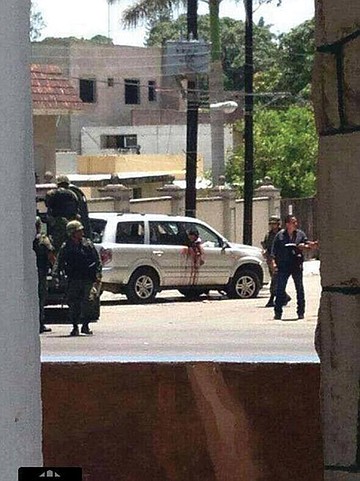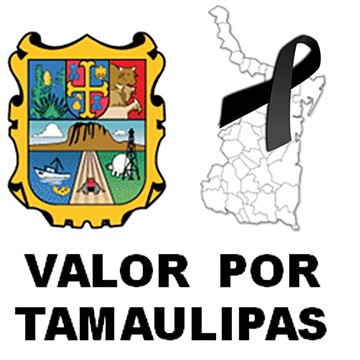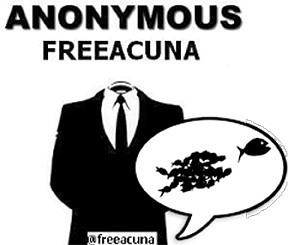 Facebook
Facebook
 X
X
 Instagram
Instagram
 TikTok
TikTok
 Youtube
Youtube

When Mexico began fully confronting drug cartels in 2006 violence erupted that has claimed an estimated 70,000 lives.
Mexico’s battle against organized crime has shifted between states at times, but the border areas have consistently been affected.
Despite what some outside of Mexico may believe, not all Mexican media has been silenced on the subject. Almost all major outlets still cover drug-related crime, yet some have laid off of the details for safety of their staffs. A few local and regional news outlets have completely dropped covering drug crime, yet many in local media still thoroughly cover the topic.
Blogs have pushed their way into the issue, often aggregating the material that is published from across the nation. One of the more popular blogs in Mexico, Blog del Narco (@InfoNarco), has done so, but not without being widely criticized for not giving credit to the authors and news outlets from which they repost material.

The social network site Twitter has trumped these blogs for gathering information quickly, by allowing real-time information to be viewed from a massive number of users. For those looking for up-to-the-second information and warnings, Twitter has become the go-to tool. Twitter avoids the wait that major media and blogs require when dishing out information.
I asked Nick Valencia (@CNNValencia), CNN national desk editor, about the trend of using Twitter in Mexico for sharing information.
“If there’s anything we’ve learned from the use of social media in Mexico it’s that residents are demanding transparency from their local, state, and federal government. The reason this phenomenon started in 2010 was because citizens felt they weren’t getting accurate or timely information from the authorities enlisted to protect them,” said Valencia.
What has proved most vital on Twitter is the use of hashtags for certain locations. Cities like Reynosa, Tamaulipas, in the northeast corner of Mexico, use the hashtag #ReynosaFollow when posting important news in the city. These hashtags are important because with a single click a citizen can get live updates in the city.
A major Twitter account that has helped lead the way for such a trend in Mexico is Valor por Tamaulipas. With nearly 40,000 followers, many check this account frequently for up-to-the-minute news in the city.
I (@K_Mennem) spoke with the administrator of the account @ValorTamaulipas, who told of the importance of Twitter and dealing with the Mexican drug war.
“It’s a great tool, it allows people to get info that the traditional media doesn’t tell, or the legal authorities refuse to say just because the political cost it has. In Twitter there are dozens of persons that do not care about the political cost, but the safety of people,” stated the administrator.
“Twitter is a tool for the people, but also has its risk, due to the presence of criminals that have their twitter accounts, and even authorities that uses this place as a source of information, and because of that crime also reacts to those activities.”
In mid-March of 2013, mayhem hit the streets of Reynosa. No real count of those who died has been released, but dozens of shootouts and illegal road blocks plagued the streets for three days. Some estimate up to 60 deaths occurred. Locals claim the bodies were dragged away by the cartel henchmen who claimed them as their own.
During this outbreak of violence, #ReynosaFollow was heavily used. Twitter users punched the hashtag into the search box and a plethora of tweets erupted. Accounts of those witnessing shootouts, citizens reporting road blocks, photos of bullet-ridden vehicles, and others warning to stay inside certain neighborhoods were posted. Locals gave no faith into what local news stations were telling them. Their only real sources were these twitter feeds.
“New media allows interested parties to interpret the situation as it evolves — real-time,” says John P. Sullivan (@zftwarning), senior fellow for Small Wars Journal, as we spoke via Twitter. “Emerging and evolving threats can’t be silenced. Reporters use it to identify and vet stories. Residents use it to avoid trouble spots; and narcos use it to intimidate rivals. New media is the new commons for both civil society and narcocultura. #Hashtags are the new reference point... @xxx is the new byline.”
Researchers at Microsoft did a study on the phenomenon in February. The study, The New War Correspondents: The Rise of Civic Media Curation in Urban Warfare, listed the top four hashtags that have been used when reporting local crime in Mexico:
#MtyFollow (Monterrey.)
#VerFollow (Veracruz.)
Twitter users in Baja California use hashtags such as #Baja, #BajaCalifornia, #Tijuana, and #TJ. Crime has overall lowered in the state, and broad daylight shootouts rarely occur. Baja California is home to multiple news agencies who report up-to-date news on drug crime (@ElMexicanOnline, @AFNTijuana) as opposed to outlets in Tamaulipas, which heavily under-report on the subject.


During July, #Elecciones2013 was used across the nation to discuss elections. The hashtag was heavily used in Baja California to discuss a number of controversies.
Andrés Monroy-Hernández (@andresmh), a researcher at Microsoft Research who worked on the The New War Correspondents study, gave some insight on the topic after I contacted him on Twitter. I asked if Twitter information should be trusted. “People need to develop new media literacy skills that enable them to assess the veracity of information online and offline. So I think information on social media should be trusted as much or as little as any other source of information,” replied Monroy-Hernández. “Being skeptical online is particularly important.”
I asked Tristan Reed, Mexico Security Analyst for Stratfor Global Intelligence (@Stratfor), to explain if organized crime and gang members are using Twitter, and if they are able to disrupt the valuable information sharing between citizens. “Organized crime uses social media for propaganda extensively and individuals involved in organized crime use services like twitter just as everyone else. They also have access to the same information social media users report on. Social media coverage on military and police operations can also benefit the criminals at times. Criminals in Mexico are frequently attempting to disrupt sharing of information on social media through fear; however, they will never be able to halt the proliferation.”
Reed continued, “Twitter users reporting on criminal activities in Mexico need to be aware of their own safety when posting, organized crime may not be able to stop reporting as a whole but criminals would not hesitate to target specific individuals as opportunities arise. Anonymity with social media is relative, not absolute; there’s always a chance for an ‘anonymous’ user to be targeted.” said Reed.
Local movements against organized crime have also benefited from the options Twitter provides. In the state of Coahuila, an organization that associates itself with the group Anonymous (@YourAnonNews), has waged a battle against corrupt politicians and the drug cartel Zetas. The group has vowed to expose those living among them as the criminals that they are.
A brief interview of the spokesperson of Anonymous FREE ACUNA (@FreeAcuna) showed the group is very adamant about using Twitter in the fight against corruption. “Twitter is important in Mexico, because our media has been compromised. Since TELEVISA and TV Azteca are in bed with the PRI and the PRI in bed with the narcos, we will never get the truth from television or print media. Therefore Twitter makes us mobile citizen journalists. It is the only true form of journalism that we have.”
111 total votes.


When Mexico began fully confronting drug cartels in 2006 violence erupted that has claimed an estimated 70,000 lives.
Mexico’s battle against organized crime has shifted between states at times, but the border areas have consistently been affected.
Despite what some outside of Mexico may believe, not all Mexican media has been silenced on the subject. Almost all major outlets still cover drug-related crime, yet some have laid off of the details for safety of their staffs. A few local and regional news outlets have completely dropped covering drug crime, yet many in local media still thoroughly cover the topic.
Blogs have pushed their way into the issue, often aggregating the material that is published from across the nation. One of the more popular blogs in Mexico, Blog del Narco (@InfoNarco), has done so, but not without being widely criticized for not giving credit to the authors and news outlets from which they repost material.

The social network site Twitter has trumped these blogs for gathering information quickly, by allowing real-time information to be viewed from a massive number of users. For those looking for up-to-the-second information and warnings, Twitter has become the go-to tool. Twitter avoids the wait that major media and blogs require when dishing out information.
I asked Nick Valencia (@CNNValencia), CNN national desk editor, about the trend of using Twitter in Mexico for sharing information.
“If there’s anything we’ve learned from the use of social media in Mexico it’s that residents are demanding transparency from their local, state, and federal government. The reason this phenomenon started in 2010 was because citizens felt they weren’t getting accurate or timely information from the authorities enlisted to protect them,” said Valencia.
What has proved most vital on Twitter is the use of hashtags for certain locations. Cities like Reynosa, Tamaulipas, in the northeast corner of Mexico, use the hashtag #ReynosaFollow when posting important news in the city. These hashtags are important because with a single click a citizen can get live updates in the city.
A major Twitter account that has helped lead the way for such a trend in Mexico is Valor por Tamaulipas. With nearly 40,000 followers, many check this account frequently for up-to-the-minute news in the city.
I (@K_Mennem) spoke with the administrator of the account @ValorTamaulipas, who told of the importance of Twitter and dealing with the Mexican drug war.
“It’s a great tool, it allows people to get info that the traditional media doesn’t tell, or the legal authorities refuse to say just because the political cost it has. In Twitter there are dozens of persons that do not care about the political cost, but the safety of people,” stated the administrator.
“Twitter is a tool for the people, but also has its risk, due to the presence of criminals that have their twitter accounts, and even authorities that uses this place as a source of information, and because of that crime also reacts to those activities.”
In mid-March of 2013, mayhem hit the streets of Reynosa. No real count of those who died has been released, but dozens of shootouts and illegal road blocks plagued the streets for three days. Some estimate up to 60 deaths occurred. Locals claim the bodies were dragged away by the cartel henchmen who claimed them as their own.
During this outbreak of violence, #ReynosaFollow was heavily used. Twitter users punched the hashtag into the search box and a plethora of tweets erupted. Accounts of those witnessing shootouts, citizens reporting road blocks, photos of bullet-ridden vehicles, and others warning to stay inside certain neighborhoods were posted. Locals gave no faith into what local news stations were telling them. Their only real sources were these twitter feeds.
“New media allows interested parties to interpret the situation as it evolves — real-time,” says John P. Sullivan (@zftwarning), senior fellow for Small Wars Journal, as we spoke via Twitter. “Emerging and evolving threats can’t be silenced. Reporters use it to identify and vet stories. Residents use it to avoid trouble spots; and narcos use it to intimidate rivals. New media is the new commons for both civil society and narcocultura. #Hashtags are the new reference point... @xxx is the new byline.”
Researchers at Microsoft did a study on the phenomenon in February. The study, The New War Correspondents: The Rise of Civic Media Curation in Urban Warfare, listed the top four hashtags that have been used when reporting local crime in Mexico:
#MtyFollow (Monterrey.)
#VerFollow (Veracruz.)
Twitter users in Baja California use hashtags such as #Baja, #BajaCalifornia, #Tijuana, and #TJ. Crime has overall lowered in the state, and broad daylight shootouts rarely occur. Baja California is home to multiple news agencies who report up-to-date news on drug crime (@ElMexicanOnline, @AFNTijuana) as opposed to outlets in Tamaulipas, which heavily under-report on the subject.


During July, #Elecciones2013 was used across the nation to discuss elections. The hashtag was heavily used in Baja California to discuss a number of controversies.
Andrés Monroy-Hernández (@andresmh), a researcher at Microsoft Research who worked on the The New War Correspondents study, gave some insight on the topic after I contacted him on Twitter. I asked if Twitter information should be trusted. “People need to develop new media literacy skills that enable them to assess the veracity of information online and offline. So I think information on social media should be trusted as much or as little as any other source of information,” replied Monroy-Hernández. “Being skeptical online is particularly important.”
I asked Tristan Reed, Mexico Security Analyst for Stratfor Global Intelligence (@Stratfor), to explain if organized crime and gang members are using Twitter, and if they are able to disrupt the valuable information sharing between citizens. “Organized crime uses social media for propaganda extensively and individuals involved in organized crime use services like twitter just as everyone else. They also have access to the same information social media users report on. Social media coverage on military and police operations can also benefit the criminals at times. Criminals in Mexico are frequently attempting to disrupt sharing of information on social media through fear; however, they will never be able to halt the proliferation.”
Reed continued, “Twitter users reporting on criminal activities in Mexico need to be aware of their own safety when posting, organized crime may not be able to stop reporting as a whole but criminals would not hesitate to target specific individuals as opportunities arise. Anonymity with social media is relative, not absolute; there’s always a chance for an ‘anonymous’ user to be targeted.” said Reed.
Local movements against organized crime have also benefited from the options Twitter provides. In the state of Coahuila, an organization that associates itself with the group Anonymous (@YourAnonNews), has waged a battle against corrupt politicians and the drug cartel Zetas. The group has vowed to expose those living among them as the criminals that they are.
A brief interview of the spokesperson of Anonymous FREE ACUNA (@FreeAcuna) showed the group is very adamant about using Twitter in the fight against corruption. “Twitter is important in Mexico, because our media has been compromised. Since TELEVISA and TV Azteca are in bed with the PRI and the PRI in bed with the narcos, we will never get the truth from television or print media. Therefore Twitter makes us mobile citizen journalists. It is the only true form of journalism that we have.”
111 total votes.